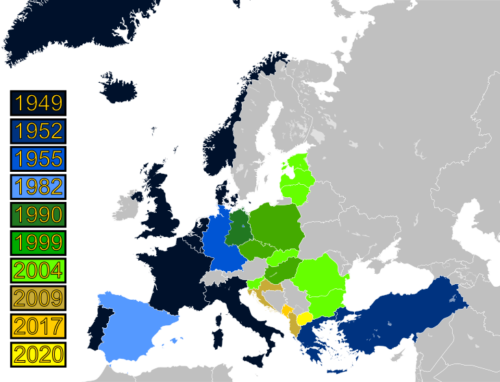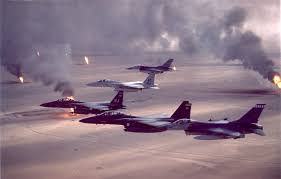


by Carl Conetta and Charles Knight, commentary originally published in Defense News, 31 March – 06 April 1997.
➪ HTML
Examines the pattern of military spending in the Asia Pacific region since the Cold War and makes recommendations for U.S. policy. Based on data and analysis from Post-Cold War US Military Expenditure in the Context of World Spending Trends.
Based on the strategic objective of a core area coalition defense (i.e. Persian Gulf, Korea, and Europe) this memo takes the reader step by step through the logic of force sizing and structuring and modernization requirements to arrive at a robust and consistent alternative to the Bottom-Up Review force posture.
by Carl Conetta and Charles Knight, PDA Briefing Memo #10, January 1997.
➪ HTML
➪ summary
Based on a review of official world military spending data, this study finds evidence that the strategic position of the US and its allies has improved immensely relative to the potential threat states. It also looks at regional trends and offers a perspective on the new and ambitious regional military strategy of the U.S.
This report offers guidelines for the development of cooperative regional security and specifies a South African defense posture that would support and encourage cooperation. It includes specifications of the fundamentals of a confidence-building defense posture for the region.
This report offers an alternative to “balancing” the arms in the former Yugoslavia by way of transfers and military aid. Instead, it illustrates the restructuring of the region’s militaries toward greater stability with “mutual defensive superiority.” This study was initiated at the request of Ambassador Jonathan Dean who serves on PDA’s Research Advisory Board.
by Carl Conetta and Charles Knight, PDA Research Monograph #4, October 1995. 141 pp. 11 figures. 13 tables.
➪ PDF
Reviews the problems of contemporary peace operations, recent reform proposals, and the requirements for successful operations. Includes a detailed proposal for enhancing and reorganizing the capacities of the UN to support and direct peace operations and for establishing a UN legion of three brigades.
by Charles Knight
originally published in Dissent magazine, Fall 1994.
This article argues that if the American left seeks to influence state policy, it must do much more than reflexively criticize U.S. military policy. Instead, it must engage with critical debates in the field from an informed stance that both criticizes and presents a coherent set of counter-policies with which it can attract the growing support of the American people over time. This article proposes both principles and select particulars for this counter-policy.
Despite the left’s consistent attention to military matters, it lacks a coherent approach to military policy. Mostly, the left has an inclination toward military issues — and that inclination has been fairly consistently anti-military. This does not preclude banging the drum occasionally for select interventions. But it does mean that whenever the left relates to military policy, it relates as an outsider; it relates as though the realm of military policy is unremittingly hostile to progressive values. This article will argue that a positive progressive military policy is both possible and necessary — necessary both to achieve progressive goals and to the credibility of the left in American politics.
by Carl Conetta and Lutz Unterseher. May 1994.
Newly published in ➪ PDF.
Originally, this primer was written and then published in spiral-bound book format for a series of seminars sponsored by the Study Group on Alternative Security Policy (SAS) and the Project on Defense Alternatives (PDA). These seminars were held in 1994 in several of the newly sovereign states of Europe: the Czech Republic, Hungary, and Belarus.
In 1994 no suitable seminar host was found in Ukraine. Although confidence-building defenses can not solve all of Ukraine’s strategic dilemmas during the present war with Russia, initial evidence strongly suggests that its military has made successful use of some of the principal aspects of a confidence-building defense.
The primer remains one of the most comprehensive presentations of the concepts of Confidence-Building Defense (C-BD), including details of their application to the structuring and operations of national armed forces. It totals 116 pages with 94 charts and tables.
Although some details of arms and tactics change over time, the fundamentals remain relevant to present-day international security, military planning, and the furthering of peaceful relations.
 Examines three significant cases in the last 90 years where defensive preparations, structures, and tactics were of decisive importance in major military operations. Published initially in Confidence-Building Defense: A Comprehensive Approach to Security & Stability in the New Era, Study Group on Alternative Security Policy and Project on Defense Alternatives, 1994.
Examines three significant cases in the last 90 years where defensive preparations, structures, and tactics were of decisive importance in major military operations. Published initially in Confidence-Building Defense: A Comprehensive Approach to Security & Stability in the New Era, Study Group on Alternative Security Policy and Project on Defense Alternatives, 1994.A detailed examination of how current military modernization programs will interact with planned force reductions in shaping America’s future armed forces. The report looks beyond superficial indicators of change to suggest the real, net effect of the current policy on the nation’s military capability.
by Carl Conetta and Lutz Unterseher, 1994. ➪PDF
A selection of slides as prepared for seminars held in Holland, the Czech Republic, Hungary, and Belarus in 1994. These were used in presentations and included in the seminar briefing book, Confidence-Building Defense: a comprehensive approach to security and stability in the new era.
The seminars were organized and co-sponsored by the Study Group on Alternative Security Policy (SAS) and the Project on Defense Alternatives (PDA).
The principles of Confidence Building Defense remain relevant to the aspirations and strategic interests of nations that have suffered mutual enmity and military standoff and now seek to create the conditions for lasting peace and to reduce the size of their militaries while advancing their essential national security.
Reviews a key planning study contributing to US post-Cold War strategic thinking and force planning, revealing critical shortcomings in the planning scenarios and simulations that continue to shape US defense policy. Individual sections address the “two war” standard of sufficiency, the persistence of “Central Front” logic, and assessments of the requirements for strategic airlift and combat aircraft modernization.
by Carl Conetta, Charles Knight, and Lutz Unterseher, PDA Research Monograph #1, February 1991.
➪ HTML ➪ PDF

Examines the character of force structure and military conflict in the Middle East and outlines a nonoffensive defense posture for nations in the region. It also draws the implications of such a posture for arms transfers and arms control policy. An appendix reviews the pertinent lessons of the 1990-91 Gulf War.
by Carl Conetta and Charles Knight, Institute for Defense and Disarmament Studies, May 1990.
The report takes a critical look at late-Cold War plans for defending Western Europe from the Warsaw Pact attack, finding these plans to be both unrealistic and destabilizing. It proceeds to clearly specify a robust alternative area-defense option and then considers standard objections to area-defense concepts.
“[L]ooking beyond the current bipolar orientation of central European armies, the adoption by nations in the region of spider-and-web defenses, reconfigured to provide all-around security, would help ensure the necessary military foundation for peaceful political, social, and economic development. “
by Carl Conetta and Charles Knight, Defense and Disarmament Alternatives, Institute for Defense & Disarmament Studies, 13 February 1990. ➪ PDF
For a summary of the contemporary European conventional arms control situation see Thomas K. Longstreth, “The Future of Conventional Arms Control in Europe,” FAS Public Interest Report Vol. 41 No. 2, February 1988 ➪ PDF
rapporteur, Carl Conetta. A workshop co-sponsored by the Institute for Defense and Disarmament Studies and the RAND Corporation featuring a presentation by Lutz Unterseher, a response by Barry Posen, and participant discussion, Washington, DC, 17 January 1989. ➪ PDF
In his presentation Unterseher warned that unless conventional arms reductions in Europe are combined with defensive reductions, they could actually undermine rather than improve stability by increasing both sides’ vulnerability to surprise attack. Posen agreed but judged that any significant shift toward a SAS-type alternative is not now feasible. Instead, a step-by-step process of bilateral reductions and restructuring might work.
by Carl Conetta, Conference Report, in Defense and Disarmament Alternatives, the newsletter of the Institute for Defense and Disarmament Studies (IDDS), January 1989.
 Report on the September 1988 conference, co-hosted by the Institute for World Economy and International Relations (IMEMO) and Institute for Defense and Disarmament Studies (IDDS), of Soviet and US arms control and military policy specialists. The report summarizes the exchange regarding problems and prospects for conventional force reductions in Europe.
Report on the September 1988 conference, co-hosted by the Institute for World Economy and International Relations (IMEMO) and Institute for Defense and Disarmament Studies (IDDS), of Soviet and US arms control and military policy specialists. The report summarizes the exchange regarding problems and prospects for conventional force reductions in Europe.
These meetings happened a little less than two months before President Gorbachev’s historic announcement at the UN in December of 1988 of substantial unilateral reductions and defensive restructuring of Soviet troops in eastern Europe – one of the most significant policy shifts in the process of ending the European Cold War. This international conference likely had more import than most.